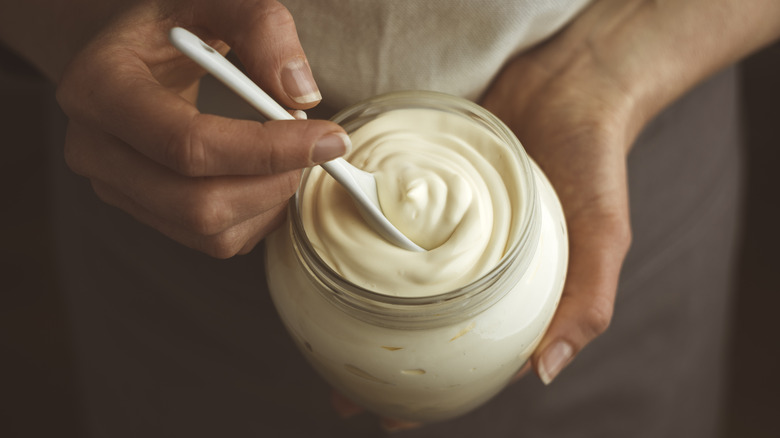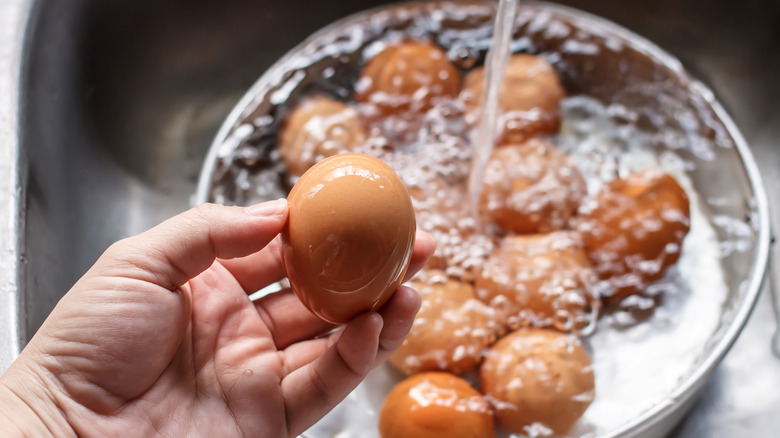The Egg Mistake You Might Be Making When It Comes To Homemade Mayo
If you've ever tried your hand at making homemade condiments, you know that they can taste a whole lot better than the pre-packaged stuff. While many of the recipes for your mustard and ketchup look easy on paper, even the smallest change can make a big difference in taste. Take homemade mayonnaise for example. Rich and smooth in flavor and texture, mayo serves as the perfect base for any sandwich or salad, and messing it up can throw off the entire balance of your meal. A lot can go wrong in the mayonnaise-making process, but one big mistake is more common than others.
For those having issues with their homemade mayo coming out too thin or lacking in other desirable textures, your eggs could be the problem. If you're using cold eggs in your recipe, you're doing it wrong. You should be using room-temperature eggs, which help to thicken up the mayonnaise.
Use room temperature eggs
Most American households keep eggs in the fridge to reduce the risk of Salmonella, so it makes sense that they're kept cold. Still, room-temperature eggs will always reign king in these kinds of recipes, because different temperatures can make for big changes in the world of cooking.
Room-temperature eggs bring height and depth to culinary creations of all kinds. When eggs are kept cold, the proteins within them harden and this makes the white within less likely to stretch. Room-temperature eggs don't have this problem, so they have an easier time blending with other ingredients. This is why, if you opted for the cold version of the ingredient, your mayonnaise would be flat, and lacking those creamy peaks.
If you want a mayo that's voluminous and well-incorporated, then it's worth taking the time to use room-temperature eggs. Now that you know why you should make the switch, let's dig into how you can get your cold eggs to room temperature.
How to prep your eggs for mayonnaise
Since the vast majority of eggs in the United States are sold cold, it's not always easy to get your hands on plain room-temperature eggs. Here are a few of the quickest methods for getting your eggs to warm up.
If you've got cold eggs, take however many you need out of the carton and put them in a heat-safe bowl. Heat up a few cups of water in a pitcher until it is warm — but not hot — then gently pour the water over the eggs until they are covered. Now leave the eggs like this for at least 10 minutes, or until they have reached room temperature. When the time is up, pour out the warm water and gently dry your eggs. Now they're ready for your next recipe.
Another good way to bring eggs to room temperature is to take however many eggs you need out of the carton, and then wrap them in a towel. Leave them like this on your counter for about 30 minutes. Don't keep them out for more than two hours, because they will no longer be safe to eat. After 30 minutes, check to see if they are no longer cold. If yes, then you're all good to go.
It's as easy as that to get room-temperature eggs. While you might feel tempted to skip this simple step in your recipe, it's truly worthwhile to include it for an extra creamy mayonnaise.


